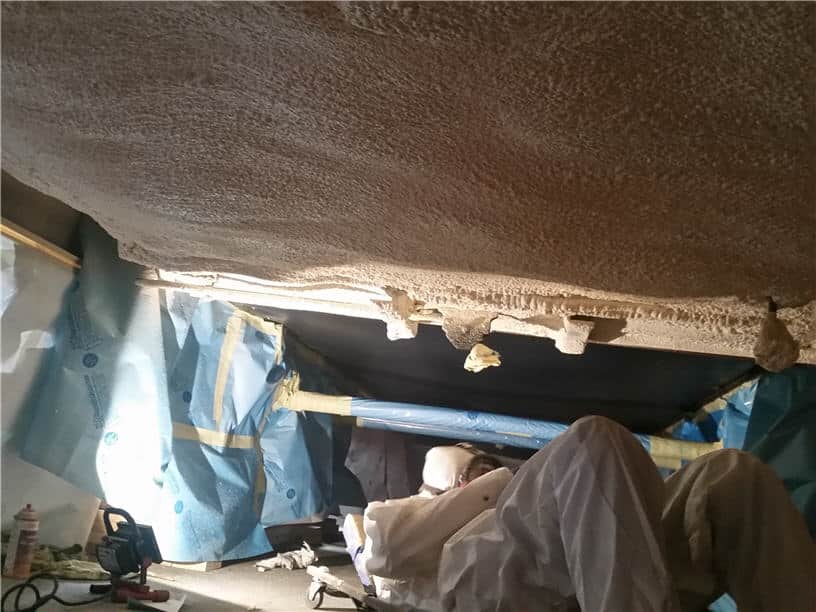Why do you need RV insulation? Well, insulation shields not only against the outside cold but also keep RV interior cold in hot weather. Insulating the underside of your trailer keeps the ground heat out, making the interior living space comfortable. Controlling the interior heat also cuts down power usage needs, which is useful in dry camping. But, do you know how to insulate RV underbelly?
Thinking about camping in the desert? You must not want to lose your trailer’s heat through the floorboard at night. Want to go on a winter vacation? Then, you must find a way to preserve warmth inside the RV. Travel trailer underbelly insulation can solve these problems.
Contents
The Preparation for RVUnderbelly Insulation
To insulate the underbelly of your RV, you need to take some preparation. The first step is to work up that underside. You need to clean that area and check for any unwanted cracks. Vibration and road debris can cause cracks and loosen the seals. Tighten the seals and do silicone caulking to close up the cracks.
The second step is to detach the coroplast and wires attached to the underbelly. RV underside is covered with a corrugated plastic sheet called coroplast. You need to remove this by detaching the self-tapping screws that secure it to the chassis.

Unscrewing the coroplast will unveil everything that is guarded under this sheet. You will need to unfasten and pull out all plumbing, wiring, and other parts that may get into the way of the insulation.
Take a picture of the underside before removing these parts so you know which goes where when re-installing. Use labels for wires for easier re-connection later.
How to Insulate RV Underbelly: Spray Foam Insulation Under RV
A trailer may lose heat through various body parts, and a significant amount passes through its underbelly. You can use an RV air conditioner and heater to maintain the interior warmth, but proper RV insulation underbelly takes some pressure off of these systems and reduces the amount of power usage.
There are a couple of insulation methods but we’re going to cover here the spray foam method. It’s an economical way to preserve the trailer’s warmth.
This insulation method has been becoming popular day by day. You can choose either ‘closed cell’ or ‘open cell’ spray foam. The first option is ideal since this waterproof foam clings quite strongly to a surface. It expands less and is somewhat rigid to keep up the structural integrity of the surface where it has been applied.
Open-cell foam is inexpensive and more flexible. It reaches all the nooks and crannies, making it easier to insulate hard to reach areas. But it’s thinner than closed-cell foam and is prone to water and moisture damage. It can break down and fall off from the surface over time.
The Tools Required for How to Insulate RV Underbelly
- Spray foam cans
- Screwdriver
- Cutting tools
- Tape measure
- Marker
- Flashlight
Insulating your trailer’s underside is not a complex task, especially when you are using spray foam. All you need is doing precise measurements, paying attention to details, and having patience.
Read more: The Complete Guide on How To Winterize An RV
Steps for Spray Foam RV Underbelly Insulation
Once you have cleaned the underside and remove the wiring and other parts, the time comes for applying the insulation. Wear personal protective equipment, including gloves, goggles, and an overall, because spray foam touching bare skin can be harmful.
Now, let’s move on to the steps for how to insulate RV underbelly:
1# Installing Fire-Resistant Sheets
Installing fire-resistant sheets between the layers of foam is necessary because spray foam releases perilous smoke when caught on fire. Measure the openings between the joists and other places so the sheets fit precisely into the underbelly. Plus, you have to cut openings on the sheets for the plumbing and wires. These connections need to fit through the sheets and the openings should not leave much blank space.
Secure the sheets with strong adhesives or screws.
2# Applying Spray Foam
Wear your protective gear before starting this step.
If you are working with the spray foam for the first time, spray on a wooden plank or somewhere else a few times for test purposes. Move on to the underbelly when you are confident that you get the hang of how to spray and how much it expands. Otherwise, it’s very much possible that you spray the foam on unwanted areas like water pipes and brake lines.
To avoid unwanted spraying, place wood frames around the important areas and pipes. It will be time-consuming but less expensive and hasslesome than changing the brake lines or other key components.

Then, spray the foam on the surface. The best practice would be to spray a little onto a wide strip and give it a few seconds to expand properly. Finish insulating the entire areas and clean the spots where you haven’t intended to insulate.
Spray foam hardens within a few minutes, so you may need to use something sharp like a handsaw to remove the excess. Wait a day or two to re-install the components that you took apart because spray foam takes that time to cure completely.
3# Re-install and Sealing Up
Once the spray foam is set, put the wiring and plumbing back together. This won’t take much time if you have labeled everything earlier. Then, install another coating of fire-resistant sheets on the spray foam. If you intend this to be a permanent installation, use silicone caulk to seal up the edges at this stage.
The last step is finishing the process by refitting the coroplast. It would be better to use new coroplast sheets if the old ones wear out too much. This is how to insulate RV underbelly with spray foam. If you don’t have prior experience or confidence to do this at home, hire a professional service. Shopping around may help you find one at a reasonable price.
